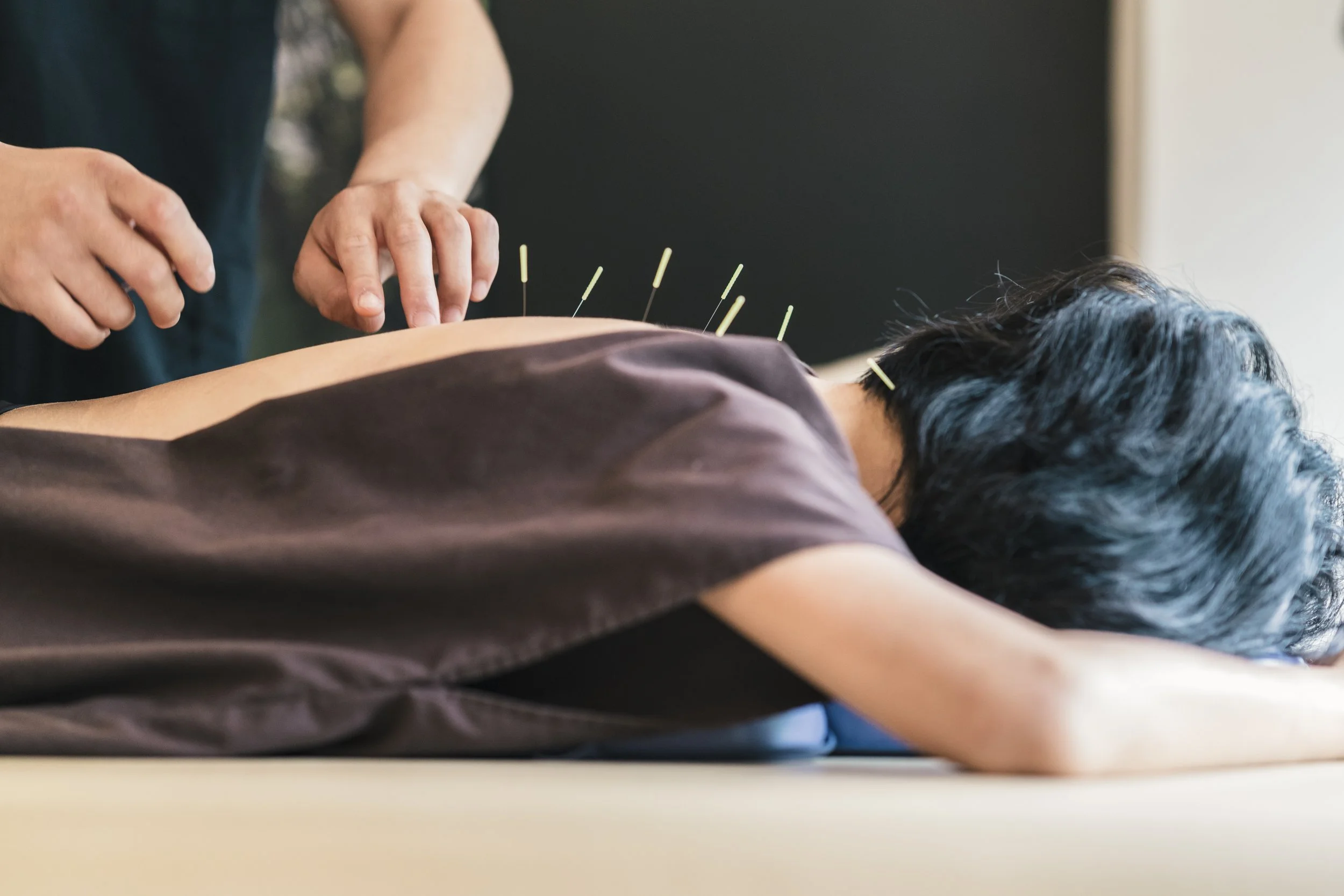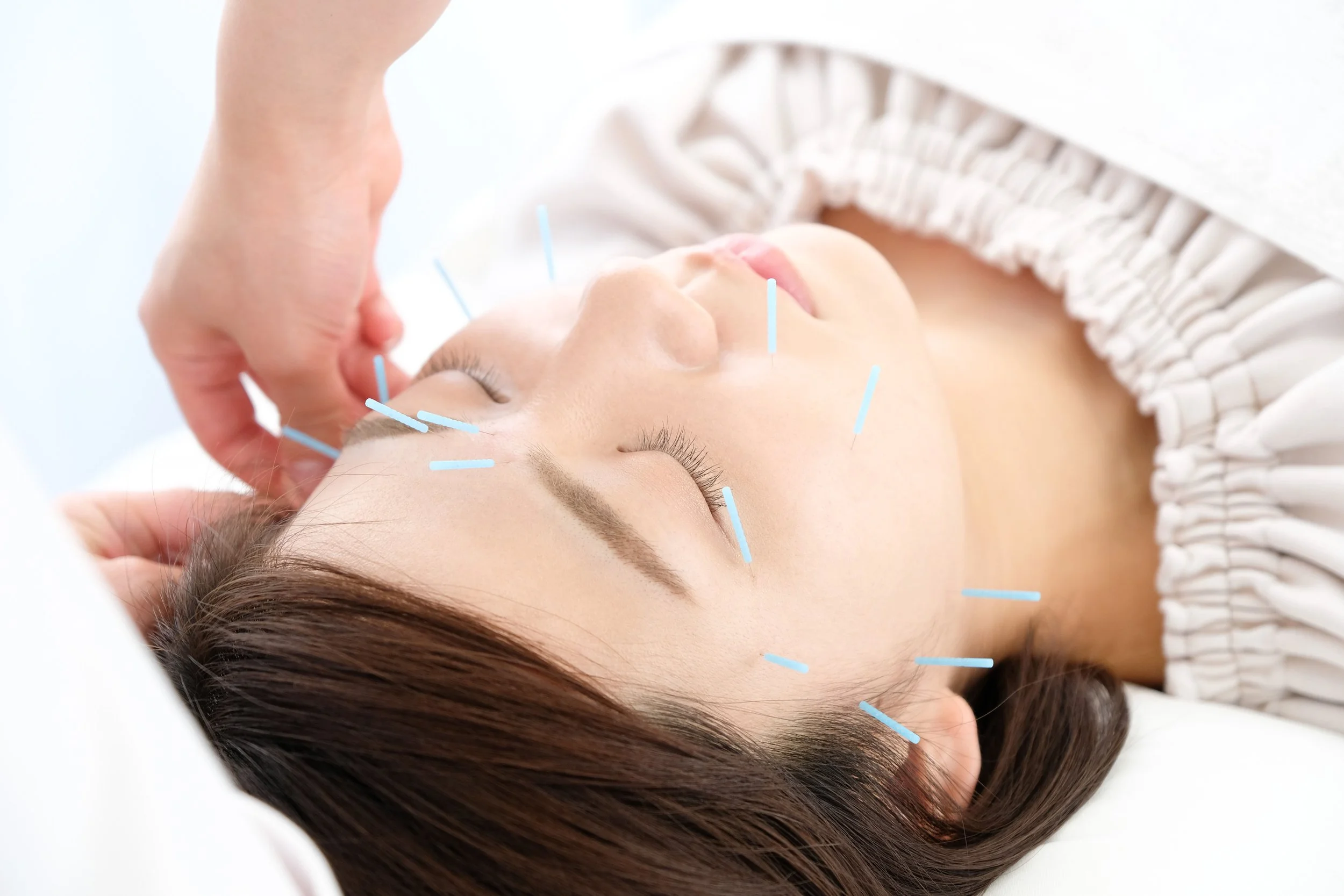All Acupuncture Points in the Human Body and How Clinics Treat Us Through Them
Acupuncture points, also known as acupoints, are precise locations on the body believed to influence the flow of qi (vital energy) and blood through the body’s meridian system. According to Traditional Chinese Medicine (TCM), disruptions in this energy flow may contribute to pain, stiffness, or internal imbalance. By stimulating these points, practitioners aim to restore balance and support overall health.
In this blog, we’ll explore how acupuncture points are distributed across the body, how practitioners use them to promote healing, and what patients can expect during treatment.
At Common TCM, we perform acupuncture with care and precision. Our trained practitioners determine which points are most suitable for each individual after a professional consultation. This ensures that every treatment is personalised — tailored to your constitution, condition, and response to therapy.
Key Takeaways
Acupuncture points are gateways for restoring balance, influencing qi flow through the body’s meridian network.
There are over 360 primary points, each linked to organs and functions that help practitioners tailor individualised treatments.
Point selection depends on diagnosis, meaning two people with similar symptoms may receive different sets of acupoints.
Modern TCM clinics, including Common TCM, emphasise safety and hygiene, using sterile needles and evidence-informed approaches aligned with regulatory standards.
Acupuncture complements holistic wellness when performed by licensed practitioners who combine classical theory with modern understanding of health.
How Acupuncture Points Are Distributed Across the Body
There are over 360 recognised acupuncture points mapped along 12 primary meridians and 8 extraordinary vessels. Each point corresponds to specific physiological and energetic functions. Some points are located on the hands and feet, while others are found along the torso, back, or head.
In TCM theory, meridians connect organs, muscles, and tissues in an integrated network. When qi circulates smoothly through these pathways, the body functions harmoniously. When stagnation or deficiency occurs, practitioners may use needles to encourage a more balanced flow.
Key Functions of Acupuncture Points
Different acupoints are associated with various therapeutic objectives depending on their meridian and location. The following table summarises common point functions recognised in TCM theory and clinical application.
| Category | Function and Example Points | Commonly Used Areas |
|---|---|---|
| Local points | Address tension or discomfort in a specific area. Example: LI4 (Hegu) for head or facial tension. | Hands, feet, limbs |
| Distal points | Affect regions distant from the needle site; used for systemic effects. Example: ST36 (Zusanli) for general vitality and digestion. | Legs, arms |
| Tonifying points | Support qi or blood when deficiency is suspected. Example: SP6 (Sanyinjiao) for nourishment and calm. | Lower legs, ankles |
| Sedating points | Help ease stagnation or excess patterns. Example: LV3 (Taichong) to regulate emotional tension. | Feet, hands |
| Balancing points | Promote overall energy alignment. Example: GV20 (Baihui) for centring and mental clarity. | Head, crown, spine |
These points are chosen according to an individual’s presentation, and combinations are selected during a personalised acupuncture session.
How Practitioners Treat Through Acupuncture Points
Step 1: Consultation and Diagnosis
Before any treatment, a qualified TCM practitioner conducts a comprehensive assessment. This includes pulse and tongue diagnosis, as well as a detailed health discussion to identify imbalances in qi, blood, yin, or yang.
Step 2: Point Selection and Needle Application
Once a treatment plan is established, the practitioner selects acupoints based on meridian theory and pattern differentiation. Sterile, single-use needles are inserted at specific depths and angles. The sensation may range from light tingling to a gentle heaviness, often described in TCM as the “arrival of qi”.
Step 3: Retention and Monitoring
Needles typically remain in place for 15 to 30 minutes. During this time, practitioners may make subtle adjustments or use manual or electrical stimulation to reinforce desired effects. Patients usually rest quietly, allowing the session to proceed calmly and safely.
Step 4: Post-Treatment Observation
After removal of needles, patients may experience a sense of lightness, warmth, or relaxation. Practitioners provide aftercare advice, such as adequate hydration and rest, to support the body’s natural regulatory processes.
Understanding Meridian Pathways and Their Connection to Health
Each of the 12 primary meridians is associated with a particular organ system, linking surface acupoints to internal functions. The following section summarises how these meridians correspond to common therapeutic goals.
| Meridian | Associated Organ/System | General Role in TCM |
|---|---|---|
| Lung Meridian | Respiratory and immune function | Regulates breathing, disperses qi |
| Large Intestine Meridian | Digestive and elimination function | Promotes bowel regulation and clarity |
| Stomach Meridian | Digestion and metabolism | Affects nourishment and appetite |
| Spleen Meridian | Transformation of nutrients | Supports energy and fluid balance |
| Heart Meridian | Circulatory and emotional wellbeing | Governs blood and mental activity |
| Small Intestine Meridian | Nutrient absorption | Assists separation of pure from impure substances |
| Bladder Meridian | Excretion and back tension | Influences fluid regulation and posture |
| Kidney Meridian | Growth, reproduction, and vitality | Anchors essence and supports longevity |
| Pericardium Meridian | Circulatory protection | Shields the heart and regulates emotional flow |
| Triple Burner Meridian | Metabolic coordination | Balances upper, middle, and lower body systems |
| Gallbladder Meridian | Decision-making and tendon health | Facilitates flexibility and courage |
| Liver Meridian | Circulation of qi and blood | Smooths emotional and physical flow |
These pathways illustrate how TCM views the human body as an interconnected system, where local symptoms often reflect deeper patterns.
Acupuncture Points Commonly Used for Specific Concerns
While acupuncture is a complex and individualised therapy, certain points are often selected for frequently observed imbalances:
Neck and shoulder stiffness: GB20 (Fengchi) and LI4 (Hegu) may be used to encourage relaxation along tension pathways.
Digestive discomfort: ST36 (Zusanli) and CV12 (Zhongwan) are traditionally linked to supporting the stomach and spleen.
Fatigue or low vitality: KI3 (Taixi) and SP6 (Sanyinjiao) are believed to nourish underlying energy reserves.
Stress and mood imbalance: LV3 (Taichong) and HT7 (Shenmen) are thought to calm the mind and promote balance.
Menstrual irregularities: SP6 (Sanyinjiao) and LV3 (Taichong) are often part of protocols for regulating qi and blood flow.
Acupuncture Points and Modern Clinical Research
Recent studies have sought to understand acupuncture through biomedical frameworks. Research has shown that acupoint stimulation may trigger responses in the nervous and circulatory systems, influencing endorphin release and local blood flow. While scientific explanations continue to evolve, these findings support the observed benefits of acupuncture in improving patient comfort and wellbeing when used alongside conventional care.
Integrating Acupuncture into a Holistic TCM Plan
Acupuncture often forms part of a broader care plan, which may include herbal prescriptions, cupping therapy, or moxibustion. When used together, these modalities aim to support overall energy regulation and recovery. Clinics offering integrated care assess whether acupuncture alone or a combination of treatments will best suit each case.
Patients are advised to seek treatment from registered TCM physicians, as recognised by Singapore’s Traditional Chinese Medicine Practitioners Board (TCMPB), to ensure that care is provided safely and within approved practice frameworks.
Find Relief and Renewed Energy Through Acupuncture Care
Exploring acupuncture can be a meaningful way to support your body’s natural balance and overall well-being. Whether you’re managing stress, addressing discomfort, or simply seeking preventive care, acupuncture offers a gentle and holistic approach rooted in Traditional Chinese Medicine.
At Common TCM, we believe effective care begins with understanding each individual’s unique condition. During your consultation, our registered practitioners will assess your health profile, explain how acupuncture may benefit your specific concerns, and create a treatment plan designed for you. Each session is carried out in a safe, professional environment.
If you wish to experience how acupuncture can enhance your wellness journey, we welcome you to visit us at Common TCM for a personalised consultation.
Frequently Asked Questions
Are acupuncture points scientifically proven?
Scientific studies have demonstrated measurable physiological responses when acupuncture points are stimulated, including activation of neural pathways, modulation of endorphin levels, and improved local circulation. While research continues to deepen understanding of these mechanisms, the evidence supports acupuncture as a recognised complementary modality that interacts with the body’s nervous and vascular systems in observable ways.
Can I learn acupuncture point locations on my own?
While charts and maps are available for educational purposes, acupuncture should only be performed by qualified practitioners. Correct identification, depth, and angle of needling require professional training and anatomical knowledge to ensure safety.
How many acupuncture points are used in a typical session?
A typical session may involve anywhere from 4 to 20 points, depending on the individual’s condition and overall health assessment. The practitioner selects points according to meridian theory and diagnostic findings.
Are all acupuncture points located on the meridians?
Most points lie along meridians, but some are extra points, meaning they do not correspond directly to a meridian yet are recognised for their specific effects in clinical practice.
What should I do after acupuncture treatment?
After a session, it is advisable to rest, drink water, and avoid strenuous activity for several hours. These steps allow the body to adjust and integrate the effects of treatment.





